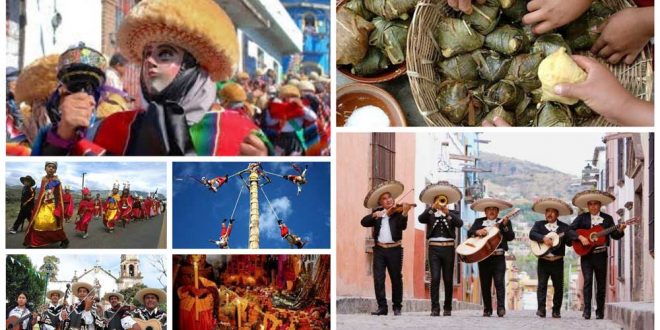Mexican sites declared World Heritage.
Mexico is a country rich in many ways, has great biodiversity, beautiful places, delicious food, and many customs and traditions, that is why it is among the first places in the American continent with more places declared by UNESCO as World Heritage and seventh place worldwide.
There are 35 sites in total divided into:
Cities and monuments.
There are 35 sites in total divided into:
Cities and monuments.
- Historic Center of Mexico and Xochimilco, CDMX (1987)
- Historic Center of Oaxaca and archaeological zone of Monte Albán, Oaxaca (1987)
- Historic Center of Puebla, Puebla (1987)
- Pre-Hispanic City of Teotihuacan, State of Mexico (1987)
- Pre-Hispanic city and national park of Palenque, Chiapas (1987)
- The historic city of Guanajuato and adjacent mines, Guanajuato (1988)
- Pre-Hispanic City of Chichen Itza, Yucatan (1988)
- Historic Center of Morelia, Michoacán (1991)
- Pre-Hispanic City of El Tajín, Veracruz (1992)
- Historic Center of Zacatecas, Zacatecas (1993)
- Rock paintings of the Sierra de San Francisco, BCS (1993)
- First 16th century monasteries on the slopes of Popocatépetl (1994)
- Pre-Hispanic City of Uxmal, Yucatán (1996)
- Historic monuments area of Querétaro, Querétaro (1996)
- Hospicio Cabañas de Guadalajara, Jalisco (1997)
- Archaeological zone of Paquimé (Casas Grandes), Chihuahua (1998)
- Historic monuments area of Tlacotalpan, Veracruz (1998)
- Historic Fortified City of Campeche, Campeche (1999)
- Area of archaeological monuments of Xochicalco, Morelos (1999)
- Franciscan Missions of the Sierra Gorda de Querétaro (2003)
- House-Workshop of Luis Barragán, CDMX (2004)
- The landscape of agaves and old industrial facilities of Tequila, Jalisco (2006)
- Central campus of the University City of UNAM, CDMX (2007)
- Protective village of San Miguel El Grande and Sanctuary of Jesus Nazareno of Atotonilco, Guanajuato (2008)
- Camino Real de Tierra Adentro (2010)
- Prehistoric caves of Yagul and Mitla in the Central Valleys of Oaxaca (2010)
- The hydraulic system of the aqueduct of Father Tembleque, Edomex / Hidalgo (2015)
Natural Scenarios:
- Sian Ka’an, Quintana Roo (1987)
- Whale Sanctuary of El Vizcaíno, BCS (1993)
- Islands and protected areas of the Gulf of California (2005)
- Monarch Butterfly Biosphere Reserve, Michoácán / State of Mexico (2008)
- Biosphere Reserve El Pinacate and Great Desert of Altar, Sonora (2013)
- Revillagigedo Archipelago (2016)
Mixed heritage (cultural-natural):
- Ancient Mayan city and protected tropical forests of Calakmul, Campeche (2002/2014)
- Tehuacán-Cuicatlán Valley, Puebla and Oaxaca (2018)
In addition, Mexico has 7 intangible cultural heritage, which protects all those that are not tangible, but whose value must be preserved such as:
- Indigenous festivals dedicated to the dead (2008)
- The ritual ceremony of the Flyers (2009)
- Places of memory and living traditions of the Otomí-Chichimecas of Tolimán: the Peña de Bernal, guardian of a sacred territory (2009
- Traditional Mexican cuisine, community culture, ancestral and living-The paradigm of Michoacán (2010)
- Pirekua, traditional song of the Purépechas (2010)
- The Mariachi, string music, song and trumpet (2011)
- Parachicos at the traditional January party in Chiapa de Corzo, Chiapas (2015)
Mexico is a beautiful country if you have the opportunity to visit it, know some of these parts it offers and you will not regret it.





Comentarios
Publicar un comentario